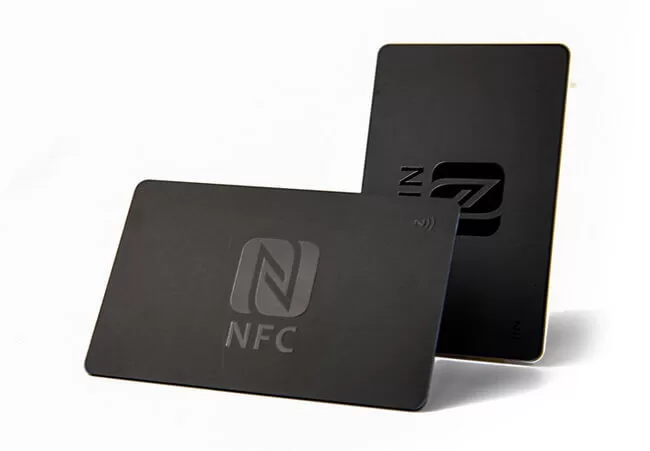
How to choose between Ntag213, Ntag215 and Ntag216 according to your needs?
Many people struggle to decide between NTAG213, NTAG215, and NTAG216 RFID tags. This article breaks down these tags based on memory, compatibility, security, size, cost, and supply risk. This will help you quickly understand which NTAG best suits your HF RFID card needs and make an informed choice.
Memory and typical use cases
Start by checking user memory. Ntag213 gives about 144 bytes. Ntag215 gives about 504 bytes. Ntag216 gives about 888 bytes. Thus, pick Ntag213 for short payloads, such as URLs and tiny vCards. For example, use Ntag213 in single-link marketing or simple checks.
Meanwhile, choose Ntag215 for medium needs such as loyalty records and richer contact data. Conversely, select Ntag216 when you require large on-chip storage for certificates or lengthy configuration blobs. Also, remember that NDEF overhead reduces usable space. Therefore, measure the actual payload size before you place your order. Finally, test encoding and parse speed across target devices now.
| Chip | User Memory | Max URL | Cost |
|---|---|---|---|
| Ntag213 | 144 Bytes | 136 Chars | Cheap |
| Ntag215 | 504 Bytes | 488 Chars | Medium |
| Ntag216 | 888 Bytes | 872 Chars | Expensive |
Compatibility and read range
All three chips follow ISO14443A. Thus, most phones and NFC readers support them. Still, antenna design and tag size determine the actual read distance. Typically, reads occur within a few centimetres. However, a full-size card with a tuned antenna gives more reliable performance. Conversely, tiny stickers reduce range and require precise positioning. Also, metal surfaces will interfere dramatically. Therefore, avoid direct metal mounting unless you use on-metal designs or add a spacer. In addition, test with both Android and iOS phones. Finally, include desktop readers in validation if your deployment frequently uses them and record the results consistently.
Security, locking, and configuration
You can protect Ntag chips with passwords. For example, a 32-bit password can restrict writes. Also, you can lock the NDEF area once the content is final. Therefore, use locking for semi-permanent deployments. However, these chips provide only basic protection. If you require strong authentication or secure storage, choose a smart card with a secure element. Moreover, document your security needs before making a procurement decision. Next, plan firmware and CMS logic to handle locked tags. Finally, include procedures for lost or compromised tags. Additionally, test recovery and replacement workflows before wide deployment and update your incident response plan accordingly.

Form factor, materials, and antenna
Tags come in various forms, including cards, stickers, key fobs, and modules. Thus, antenna shape influences performance. For instance, thin stickers deliver a shorter range. Conversely, full-size CR80 cards deliver stable reads and easier printing. Additionally, metal will reduce performance unless you select on-metal variants. Therefore, evaluate mounting surfaces early. Moreover, choose PVC, PET, or PET-G based on durability and finish. Next, test printability, laminating, and edge sealing if you plan custom graphics. In addition, consider environmental factors such as temperature and humidity. Finally, test the label’s adhesion and abrasion resistance for long-term use, and verify the antenna placement guidelines provided in the supplier’s datasheets.
Cost and supply considerations
Ntag213 is the cheapest option per unit. Meanwhile, Ntag216 costs more due to its larger memory. Therefore, include price in volume forecasts. Also factor in supplier reliability and lead times. Counterfeit chips do appear in the market. Consequently, verify part authenticity before purchasing in large quantities. For instance, check UID patterns, confirm memory size, and read/write validation. In addition, request batch traceability and certificates. Next, order samples and perform acceptance tests. Furthermore, include rejection terms in purchase orders for batches that fail to meet the specified requirements. Finally, plan for alternative suppliers to mitigate supply risk and monitor inventory turns on a monthly basis for enhanced resilience.

Real-world deployment scenarios
For business cards and simple campaigns, choose Ntag213. For loyalty programs and medium data demands, choose Ntag215. For certificates, long pointers, or complex payloads, choose Ntag216. Also consider write frequency and endurance. If you rewrite tags often, test write cycles and speed. Moreover, ensure your CMS supports larger NDEF messages. Next, pilot in the actual environment to confirm read reliability.
Additionally, validate the user flow on popular phones. Finally, measure user experience metrics such as time-to-read and failure rate. Then iterate on antenna and placement if issues appear during the pilot and document fixes for production deployment.
Tips for Choosing the Right Tag for Your HF RFID Card
When selecting tags for your HF RFID card, first list the essential factors: memory, size, security, and budget. Next, shortlist tag models and order samples. Then, test them in real-world environments with mobile and desktop readers. Also, test them on the planned mounting surface and in the final enclosure. If custom graphics are important, ensure that the print quality and lamination are satisfactory. Also, verify the sample’s UID, memory size, and basic read/write performance. Also, remember to require supplier traceability in your contract. Finally, include acceptance testing in your purchase order.


